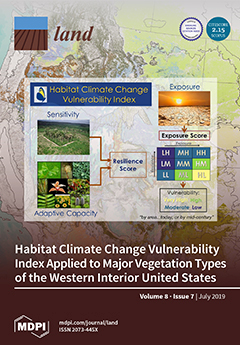Resource information
Climate and land use/cover changes are potential drivers of change in hydrology and water use. Incidences of these factors on Bandama hydrological basin and Kossou hydropower generation (1981–2016) in West Africa are assessed in this present work. Using Landsat products of United Stated Geological Survey, results show that water bodies areas and land use have increased by 1.89%/year and 11.56%/year respectively, whereas herbaceous savanna, savanna, forest and evergreen forest coverage have been reduced by 1.39%/year, 0.02%/year, 2.39%/year and 3.33%/year respectively from 1988 to 2016. Hydroclimatic analysis reveals that streamflow presents greater change in magnitude compared to rainfall though both increasing trends are not statistically significant at annual scale. Streamflow varies at least four (two) times greatly than the rainfall (monthly and seasonally) annually except during driest months probably due to land use/cover change. In contrast, Kossou hydropower generation is significantly decreasing (p-value 0.007) at both monthly and annual scales possibly due to water abstraction at upstream. Further works are required to elucidate the combined effects of land use/cover and climate changes on hydrological system as well as water abstraction on Kossou generation.


